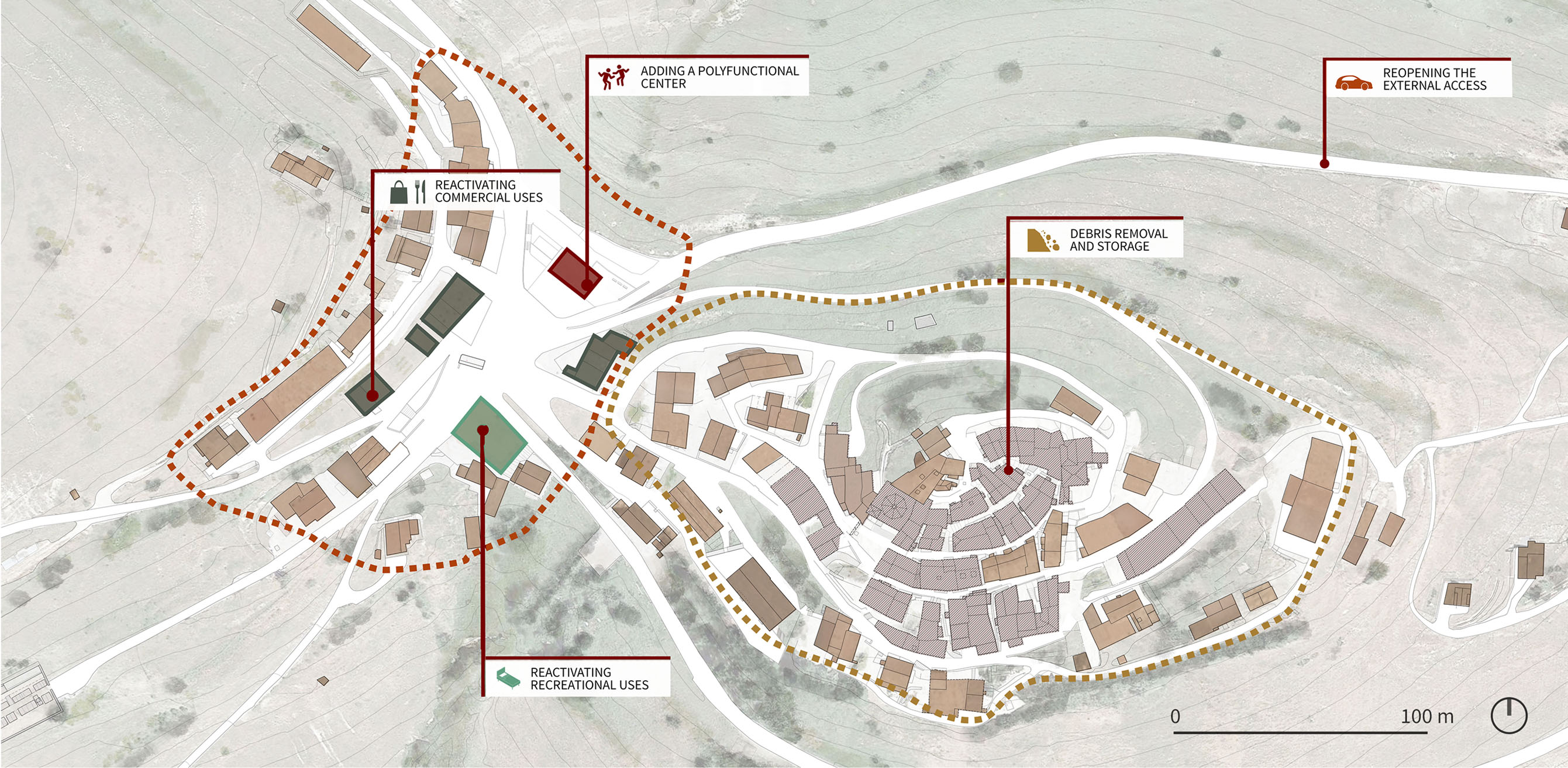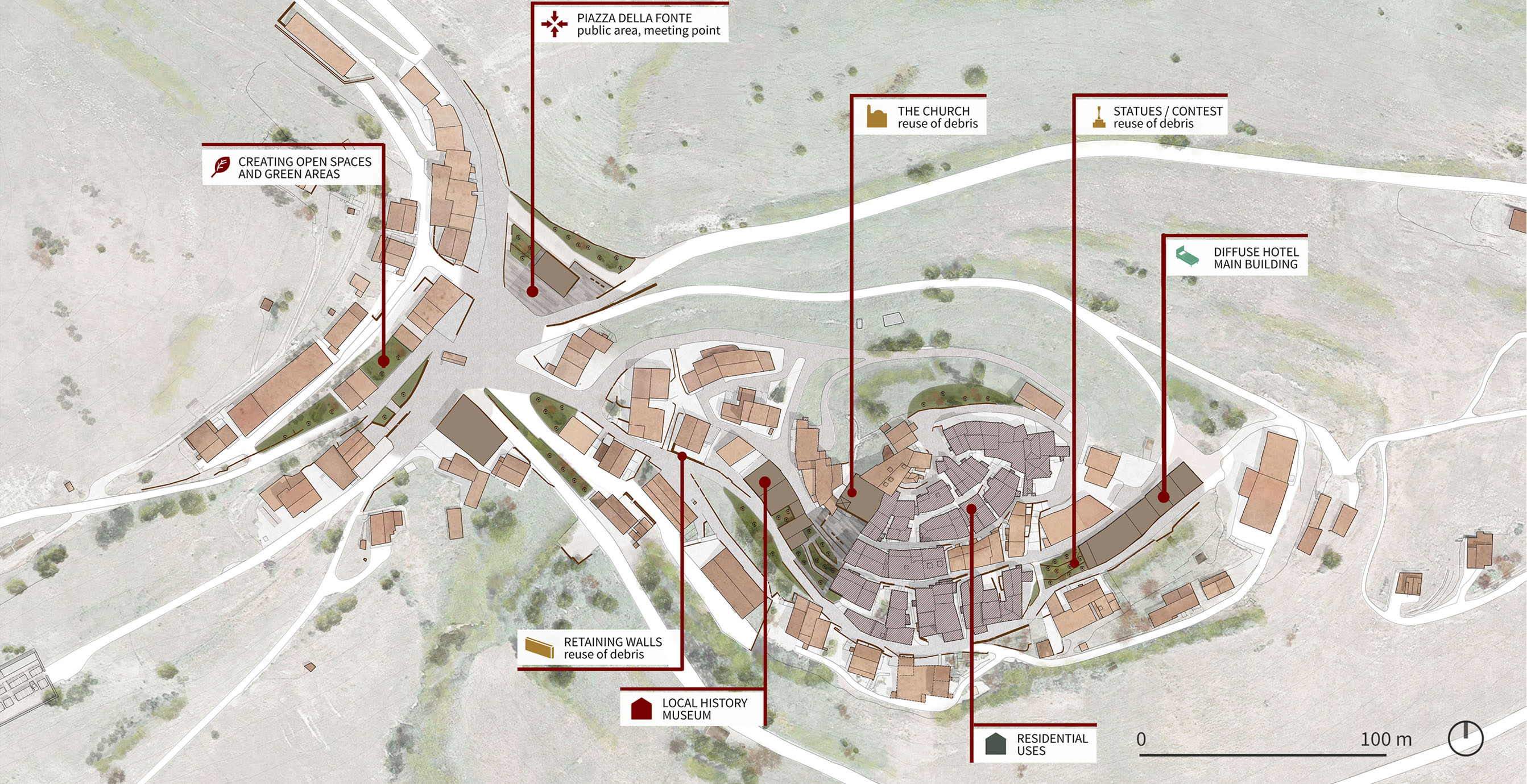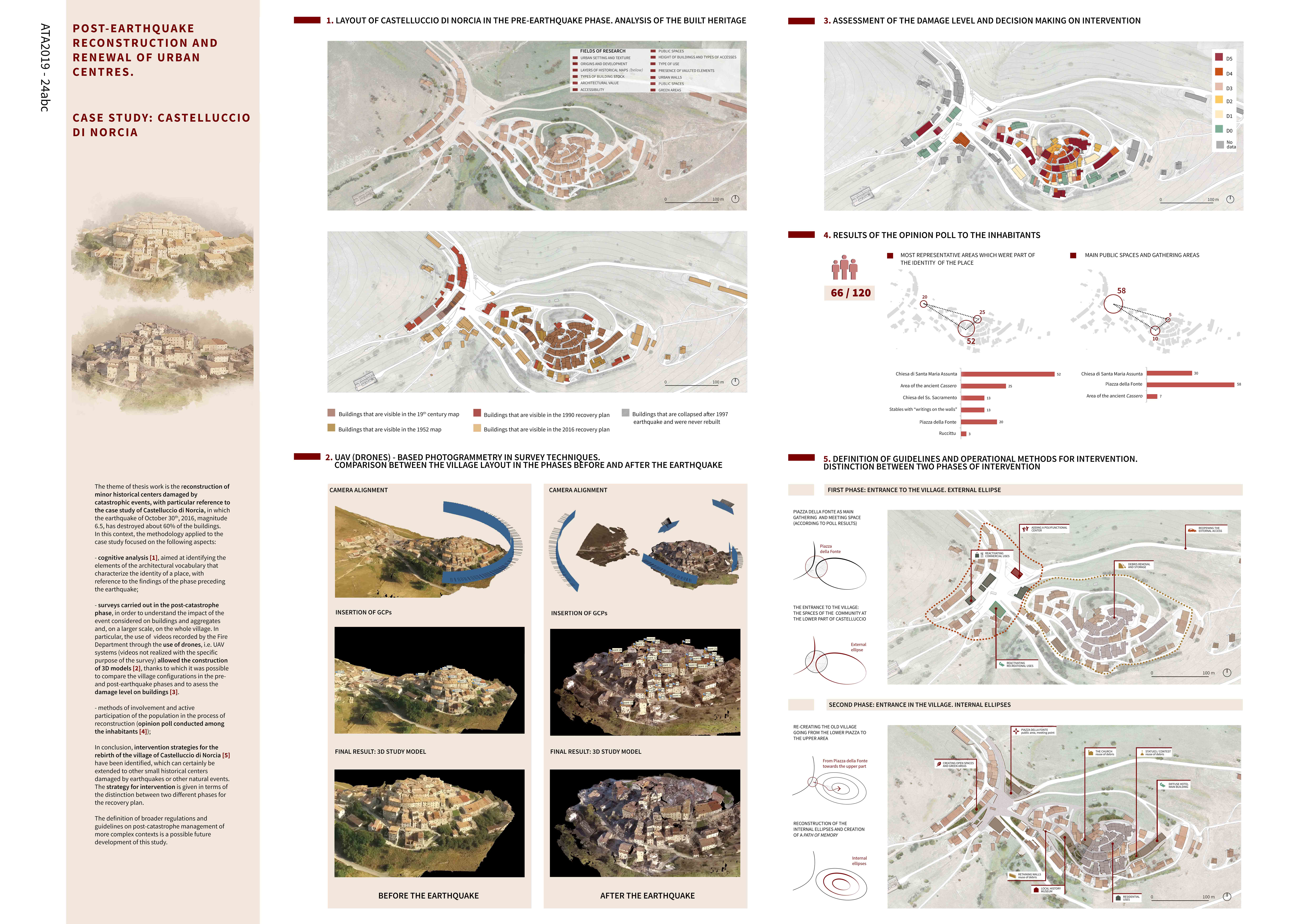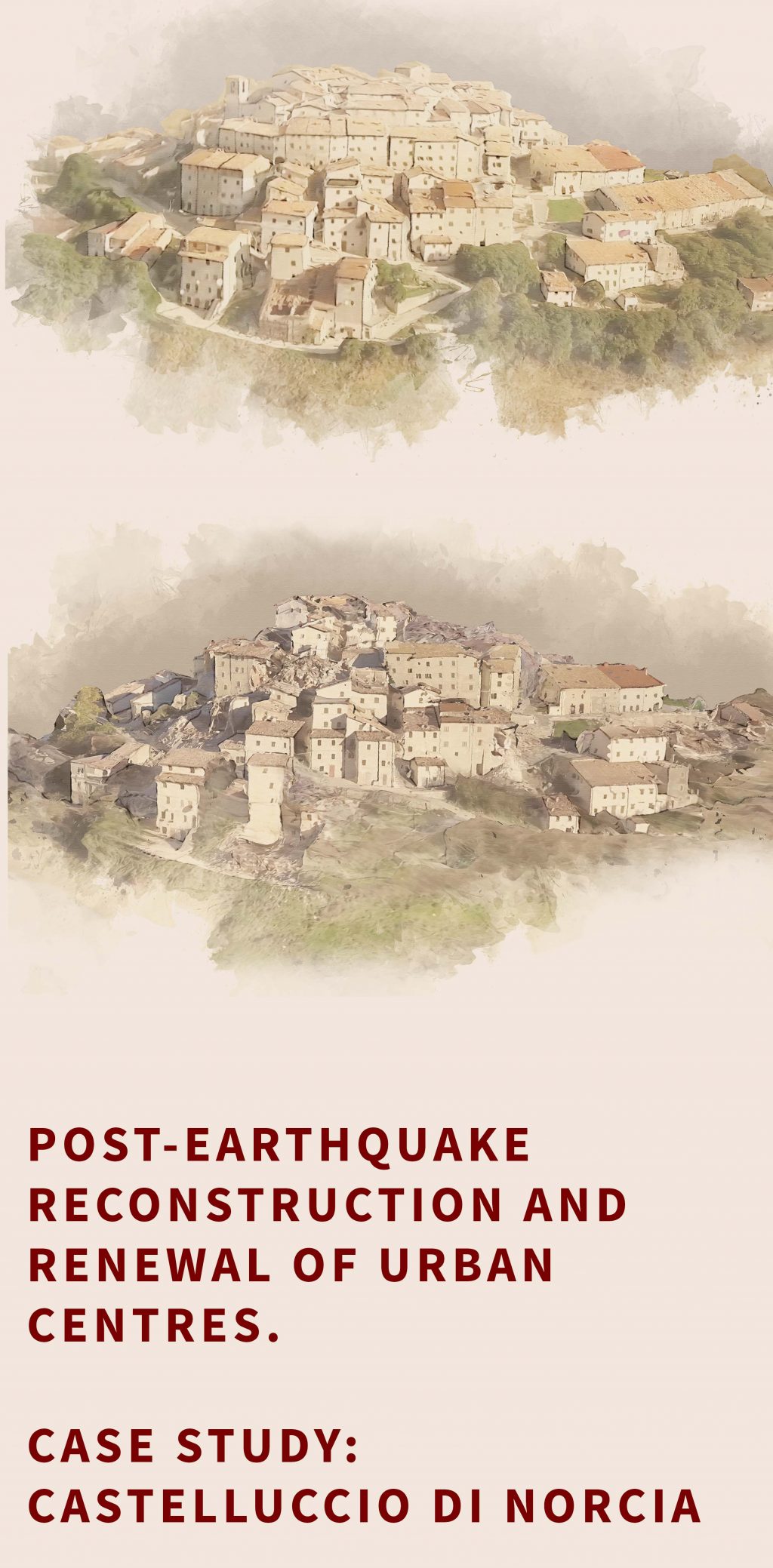The topic of the work is the reconstruction of minor historical centers damaged by catastrophic events, with particular reference to the case study of Castelluccio di Norcia, a village in Central Italy which was hit by the earthquake of October 30, 2016.
The thesis analyzed the following aspects:
– cognitive analysis, aimed at identifying the main elements of the architectural vocabulary,
– methods of involvement and active participation of the population in the process of reconstruction (analysis of opinion polls among the inhabitants);
– surveys carried out in the post-catastrophe phase, describing the impact of the earthquake on buildings and made through the use of drones
Aiming at the definition of guidelines for intervention.

The theme of thesis work is the reconstruction of minor historical centers damaged by catastrophic events, with particular reference to the case study of Castelluccio di Norcia. The Italian minor villages and historical centers, intimately linked to the concepts of collective identity and conservation of cultural heritage, as well as being affected by the problem of depopulation, are often located in territories with high seismic risk. In concomitance with destructive events, such as the disastrous earthquakes of 2016 that hit the villages of the Central Italy along the Apennines, the problem of their recovery arises. Analyzing this theme, the thesis was addressed to the development of operational methods and definition of guidelines to be used in the process of redevelopment and revitalization of a village, in the more general perspective of reconstruction. The proposed methodology has been applied more concretely in reference to the case study, which, as mentioned, concerns the village of Castelluccio di Norcia, where the earthquake of October 30, 2016, magnitude 6.5, has destroyed about 60% of the buildings.

The study of the thesis work focused on the following aspects: - cognitive analysis, aimed at identifying the elements of the architectural vocabulary that characterize the identity of a place, with reference to the findings of the phase preceding the earthquake; - surveys carried out in the post-catastrophe phase, in order to understand the impact of the event considered on buildings and aggregates and, on a larger scale, on entire villages. In particular, the use of videos recorded by the Fire Department through the use of drones, i.e. UAV systems (videos not realized with the specific purpose of the survey) allowed the construction of 3D models by drones, thanks to which it was possible to compare the village configurations in the pre- and post-earthquake phases and to asess the damage level on buildings. In these terms, the application of drones in photogrammetry is a powerful tool in the analysis of post-catastrophe scenarios, especially in cases where the application of traditional ground-based survey technologies is difficult, due to problems of accessibility of places. - methods of involvement and active participation of the population in the process of reconstruction (opinion poll conducted among the inhabitants); In conclusion, intervention strategies for the rebirth of the village of Castelluccio di Norcia have been identified, which can certainly be extended to other small historical centers damaged by earthquakes or other natural events.

The Board:






